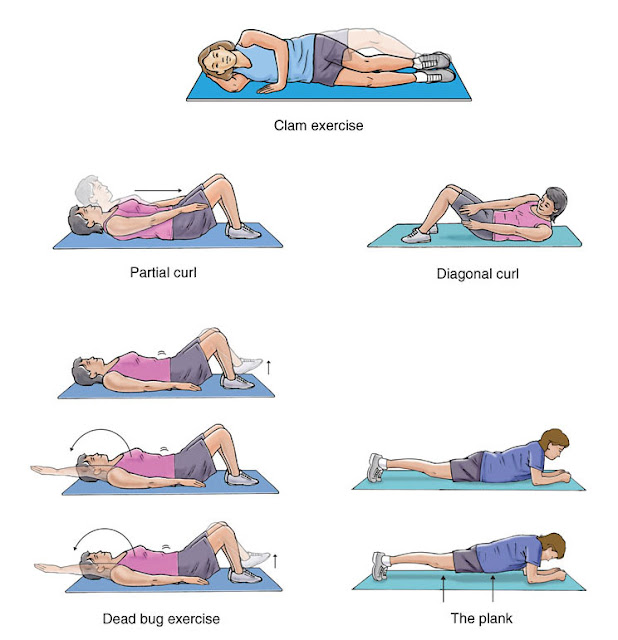During pregnancy our abdominals take quite the battering. Even though you may have stayed active during pregnancy, stretching to accommodate a little being can take it’s toll on our abdominals, (to the point of requiring surgery to fuse the abdominals back together) so care needs to be taken.
Specific exercises focused on ‘bringing in your girdle” will compliment the return of a flatter stomach after pregnancy and help strengthen the muscles needed for cardio exercise to regain fitness. * This is if you have not been diagonised with diatasis recti.
Specifically, I’m talking about deep core exercises. Working and toning the transverse abdominus and pelvic floor muscles, rather than traditional exercises like crunches and leg raises (these are far too demanding early on).
Exercising the external muscles while neglecting the deepest layer results in a functional imbalance within the abdominal wall which usually leads to back pain down the track and in cases of diastasis recti, can make it worse.
Sure, weight loss will help with the lessening of body fat around the mid section and a flatter stomach after pregnancy, but if you’re planning on returning to your once loved fitness regime, then it’s certainly in your best interest to hook into core workouts.
The pelvic floor is important for quite a few reasons and you need to do pelvic floor exercises to keep its integrity and health. This helps with incontinence, postpartum issues and training the pelvic floor can also help create the flat stomach you’re looking for. The transverse abdominal muscle wraps around your torso from front to back and these muscle fibers run horizontally, similar to a corset or a weight belt.
We are aiming to switch back on deep laying muscles that may have become dormant while we were pregnant, and turn off others that were used as a compensation. Very much the same as Pilate style exercises. Imagine pulling in your navel to your spine during exercises, not just sucking in your stomach but really drawing in and pulling up of your pelvic floor while performing the movements. These muscles need to start working again first, and then you can move onto the external obliques in time….we are conditioning from the inside out.
Muscle groups that become too tight as a result of pregnancy:
+ hip flexors
+ lower back
+ thighs
+ chest
+ shoulders, (particularly muscles that elevate the shoulder blades)
+ back of the neck
Muscle groups that weaken as a result of pregnancy:
+ upper back muscles
+ external rotators of the shoulder
+ buttocks
+ front of the neck
+ abdominal wall
+ pelvic floor
Generally it is at about 6 weeks, when your doctor gives you the all clear to proceed with any exercise (apart from the simple pelvic floor exercises the hospital physio may have you doing after a cesarean). There are many hormonal issues and physiological changes that need to reset back especially after a cesarean delivery as it’s major abdominal surgery and the stitches need time to heal. We are usually exhausted, emotional and time poor so it really is when you feel ready to dedicate the time and focus on regaining strength, but it is a case of sooner the better…
These five exercises are a great place to start, and done properly can be challenging. Working with your breath while concentrating on drawing in your navel to the spine AND pelvic floor muscles can fatigue your abdominals surprisingly quickly. Just performing the move with your legs and/or arms is not achieving anything if your not bringing in your core. Controlled and purposeful is the aim of the game. Completing to fatigue is enough as it’s super important to not overdo things in the early stages.
Like an muscle, it takes time to build strength and it could take up to 6 months before you feel you can really draw up your pelvic floor or brace your abdominals. Personally, I felt like it took me 2 years to regain a level that I’m happy with.
Please check with your doctor before you begin any exercise program




